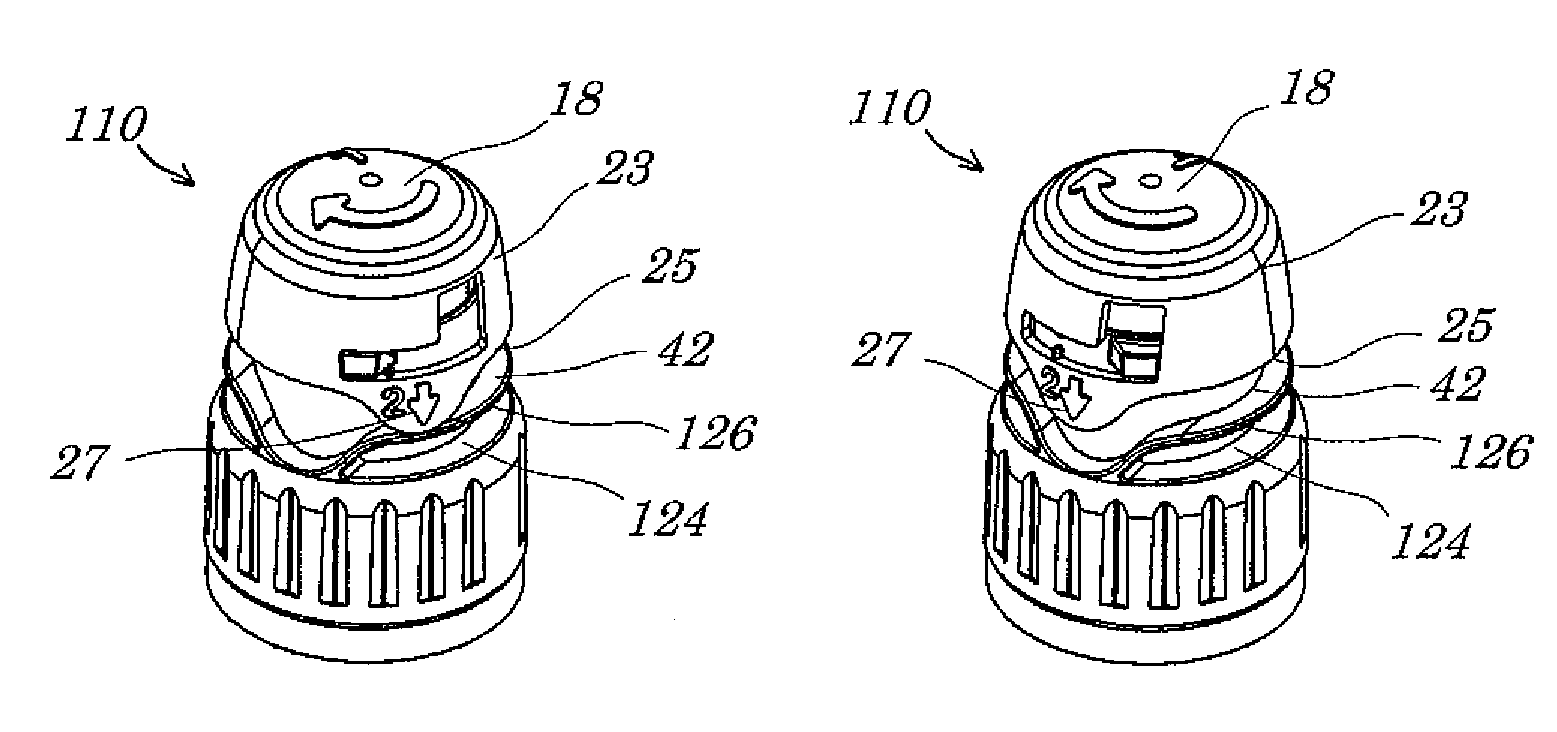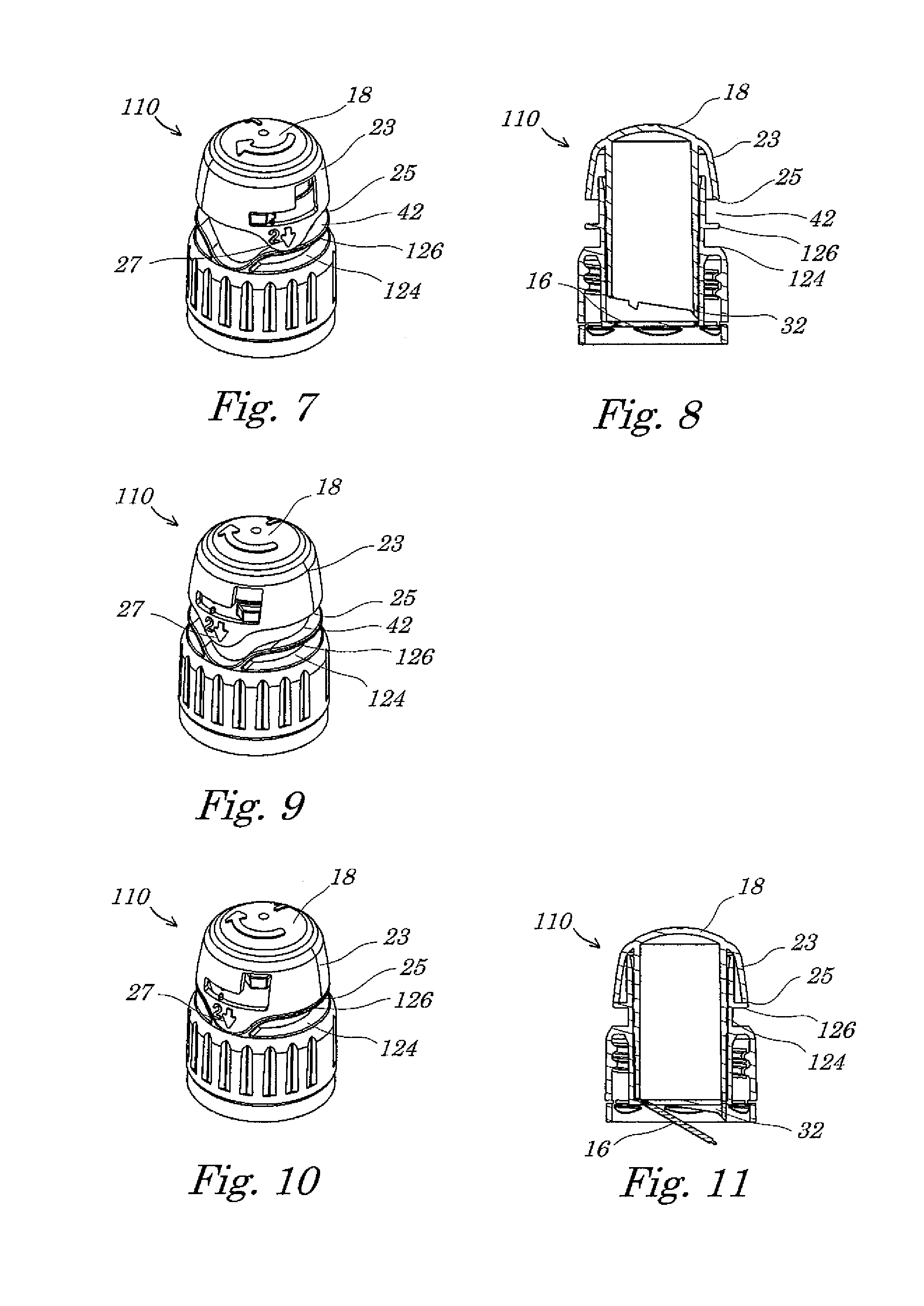Closure cap for a container
a container and closure technology, applied in the field of container closure caps, can solve the problems of not being intuitive to use, not providing the consumer with the original desired effect, and expensive production of the closure caps described in the document, and achieve the effect of reliable activation protection and easy removal
- Summary
- Abstract
- Description
- Claims
- Application Information
AI Technical Summary
Benefits of technology
Problems solved by technology
Method used
Image
Examples
Embodiment Construction
[0050]The closure cap according to a first embodiment of the invention is shown in the first, non-active position in FIGS. 1 to 3.
[0051]The closure cap, designated overall by the reference numeral 10, is fastened on a bottle neck 11 of a container, which for reasons of better clarity is not shown any further. The closure cap 10 includes a cap housing 12 which has a substantially cylindrical recess 13 which has a top opening 14 and a bottom opening 15. The bottom opening 15 is closed by means of a piercable membrane 16 such that the recess 13 is realised overall in a U-shaped manner. A plunger 17, which includes a cover 18 and a cylindrical lateral surface 19 which extends downward from the underside of the cover 18, is inserted into the recess 13. The lateral surface 19 engages in the top opening 14 of the recess 13. As can be seen in particular from the cross sectional representation in FIG. 3, the outside diameter of the lateral surface 19 corresponds substantially to the inside d...
PUM
 Login to View More
Login to View More Abstract
Description
Claims
Application Information
 Login to View More
Login to View More - R&D
- Intellectual Property
- Life Sciences
- Materials
- Tech Scout
- Unparalleled Data Quality
- Higher Quality Content
- 60% Fewer Hallucinations
Browse by: Latest US Patents, China's latest patents, Technical Efficacy Thesaurus, Application Domain, Technology Topic, Popular Technical Reports.
© 2025 PatSnap. All rights reserved.Legal|Privacy policy|Modern Slavery Act Transparency Statement|Sitemap|About US| Contact US: help@patsnap.com



